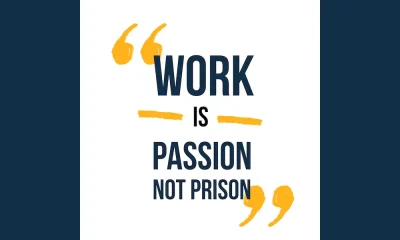Marketing
The Worlds Biggest Franchises

Following the success of the world’s biggest franchises can be a sensible approach for a new franchise. New franchises need to strike a balance between familiarity and innovation without sacrificing originality.
In this article, we look at facts about some of the most well-known franchises and what they have in common that your new franchise can attempt to replicate.
Understanding how a franchise works is really simple! The owner of the original company, formally known as the franchisor, allows a third party the right to open a company using the franchisor’s name for an agreed amount of time. An ongoing fee to use the name and operate follows, and additional payments may be required. The set-up costs can be a one-off payment or scheduled via a payment plan. Plus, franchises share the costs of brand marketing, which may include:
- Franchise Public Relations
- Digital marketing campaigns, including SMM, video marketing, content and email marketing
- Advertising offline and online
- SEO and SEM
Simply put, a franchise is an alternative to building chain stores and spreads the risks and rewards. The franchisor’s success depends on the success of the franchisees, so there is a lot of work done to provide a suitable template for success, including:
- Training and knowledge centres
- Documents and guides for marketing and communication
- Technology, i.e. hosting, systems and Apps
- Administration support, i.e. HR, accounting
Owning a franchise is an option for setting up your own company. Owning a franchise with a successful brand and reputation. Essentially, the most challenging work has been done by the franchisor. You get what you pay for, so if you’re buying a top brand like KFC or 7-Eleven, get ready to fork out a substantial sum. See this list for the expected initial investment for the top global franchises.
Franchises enjoy the opportunity to have a successful business with the help and guidance of experienced business owners, i.e. other franchisees and franchisor management.
Top Global Franchises
Some of the world’s most famous brands, such as thriving fast-food chains like McDonald’s and Burger King, are franchises. Arguably, many of the fast-food franchisors are commercial property magnates who happen to control who leases their property.
However, not all franchises rely on foot traffic. Some of the industries that are services oriented include:
- Commercial cleaning services
- Business coaching and consulting
- Tax services
- Fitness
- online education and tutoring
Kumon, an education-based tutor program, is a franchise. Of course, it seems small compared to fast-food chains, but it operates in 50 countries and has employed 22,600 workers. With 24,700 units, Kumon has received $11,628,000,000 in revenue.
All successful franchises have in common that they reach an extensive customer base due to their companies operating in many different locations and countries. McDonald’s is, in fact, one of the world’s largest fast-food chains. As you can see from the infographic, McDonald’s has 375,000 employees, 36,853 units and a whopping $24,6000,000,000 in revenue.
However, although one of the largest franchises, McDonald’s has fewer employees than KFC. KFC accommodates 455,000 employees over 19,995 units. KFC is very similar to McDonald’s in terms of its countries and the revenue it receives.
It is common for hotels to be franchised, and an excellent example is Hilton Hotels. Hilton hotels and resorts operate in 78 countries, so you will likely get the privilege of staying in a Hilton room at some point. With 4,925 units and 169,000 employees, Hilton generates a revenue of $11,663,000,000.
Franchising a company can allow it to become a national or worldwide brand. This is what makes
franchises so desirable as they reach a large customer base and their ability to become global enterprises.
Starting A New Franchise
The path to success with a new franchise is to learn from the best and most well-established franchises and create a brand that resonates with customers.
The start-up phase is the same as with new businesses, where you must do the following well.
Create Market Demand
If there’s a strong demand for the type of content or products offered by the most prominent franchises, it may indicate a receptive audience for similar offerings. However, conducting market research to confirm this demand and identify any gaps or opportunities is essential.
Audience Expectations
Audiences often have expectations based on their experiences with successful franchises. While meeting some of these expectations can be beneficial, there’s also room for innovation and differentiation. Striking a balance between familiarity and novelty can help attract and retain audiences.
Brand Recognition
Leveraging the success of established franchises can provide brand recognition and credibility from the outset. However, the new franchise must develop its identity and value proposition.
Risk Mitigation
Mimicking successful franchises can reduce some risks associated with launching a new venture since there’s already evidence of demand and a proven business model. However, it’s essential to avoid replicating existing content or ideas without adding anything new or distinctive.
Creative Freedom
While learning from successful franchises is valuable, creators should also feel empowered to explore new concepts, themes, and formats. Innovation often comes from pushing boundaries and challenging conventions rather than following established formulas.
Longevity
Franchises that endure over time often evolve and adapt to changing audience preferences and market dynamics. While initial success is essential, sustained success requires ongoing innovation, engagement, and responsiveness to feedback.






